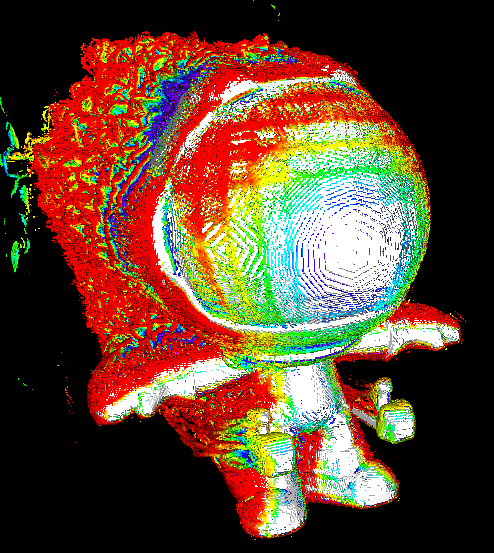Edit 2: I purchased the Bambu A1 mini. If I regret it, there will be more chances in later years. Haha. Maybe by then I can work with resin and make the really fun minis. Thank everyone who responded for your advice and help.
Edit: I am leaning against resin printing due to the lack of sufficient ventilation in my current work space and the potential for injuring my cats. I also do not plan to do exclusively miniatures; they were just the thing I was most excited for when making this post.
I looked around for a pinned thread or purchase wiki type thing, but didn’t see one. I apologize if this is the wrong place.
After visiting a family member, I have decided that 3D printing has finally gotten affordable enough for me to maybe add to my list of hobbies. My primary use cases would be making miniatures (no particular scale necessary, as I just like to paint them at the moment), making parts for other hobbies (including cross stitch), and just generally making gifts and fun knick nacks. My budget is no more than $250 for the machine itself. I have not-insignificant computer experience, and some training in CAD programs.
Several seem to be on sale in the US for Father’s Day (today), and I was wondering if anybody had some advice or suggestions on some specific ones.
- Creality Ender-3 V2 is what my family member has had for a while now and enjoyed, and less than $200 is very nice. It does seem to be dated at this point, and Creality support seems to be lacking.
- There’s also the Neo of the above for the same price, but I am honestly having a hard time pinpointing the difference.
- Sovol SV06 seems to be a common recommendation for the price range, but I’ve heard similarly negative things about their support, especially on Amazon (although I no longer trust Amazon reviews very much).
- Flashforge Adventurer 5M appears to be on a significant sale on their official eBay (240 USD), but I have only really seen it recommended in almost spammy manners, which seems like either excitement for the sale or an ad campaign.
Any help you can give is greatly appreciated, even if it’s just not getting into the hobby at this price point.
I’ve got a 3v2, and I would not use it for d&d sized minis.
It’s a decent machine, but it’s definitely a hobby on its own keeping it happy.
Yeah, it didn’t seem like it could handle detail at a very small scale. However, making something in the 5-6 cm range would still be wonderful for painting. How do you have to keep it happy?
Ender 3 IMO is mostly obsolete now, nowadays you can easily get something for a similar price with better features across the board. Yes, an ender 3 will work, but why get one if you can get something better for the same price? (video on the topic)
Bambu A1 Mini is on sale. Add a 0.2mm Nozzle and you have a perfect machine for miniatures
That’s exactly what I decided to go with. Looking forward to learning
That does appear to exceed my budget by $100 even on sale, though. Unless I’m missing something.
I am seeing that suggestion a lot elsewhere, too.
You have to choose the one without AMS color changer: https://us.store.bambulab.com/products/a1-mini?variant=41513493627016 It should be 199$
Yep, right there. Missed it entirely. Haha.
That model appears to be the most frequently recommended one for beginners, from my couple hours of research. Is it just the ease of use, or is the quality there, too?
Both quality and ease of use. It’s main downside is closed platform. No switching to klipper or prusa slicer, stuck with bambu studio. It’s more of a deal if you ever wanted to tinker. For a beginner or someone who just wants to print it’s good.
Bambu Studio does appear to be open source and available on Linux, though, which were my first concerns. I’m not sure I would need to switch to Klipper or something similar in that case even if I could.
TIL cool! More to mess around with when I get back to my p1s.
Yeah Bambu Studio is available and works fine on Manjaro (I’m too lazy to build arch from scratch nowadays), obviously ymmv on another distro.
You can use OrcaSlicer, another Prusaslicer fork
Oh cool I’ll have to look into that!
I can’t speak about the printer choices (I have a prusa mini), but I can talk a little about miniature printing.
At the level of detail you probably want, filament dryness is vital. Damp filament strings loads and generally doesn’t print cleanly, losing you all the detail.
When you start off, you should be fine as long as you put your spools back in their bag with the dessicant pouches (could be worth buying more). But once you can, either making/getting a dry box or buying a filament dryer is probably worth it.
If you want to print miniatures that are actually miniature in scale, a resin printer is probably the way to go. That said, you need to wash prints, cure prints, properly dispose of waste materials, etc. This article talks about their differences and shows somr a/b comparisons halfway through it. You can get pretty good detail with a small nozzle on a FDM printer, but resin will still blow it away.
As for a budget printer, most are generally pretty reliable but if you want good results you’re probably going to need to fiddle with them. You’ll also probably need to fiddle with them to keep them running and/or optimized (for example, better fan shrounds for your hot end, etc). I didn’t mind somewhat ugly prints from my i3 Plus, so I didn’t need to do very much fiddling beyond some basic mods over the 5 or so years I was fairly actively using it - especially after I replaced the bed springs with silicone and printed snug fitting thumb wheels.
There’s nothing wrong with an “old” printer. I bought a Monoprice branded Wanhao Duplicator i3 Plus a little over 7 years ato and from a pure feature perspective it’s not that different than the base Ender v3. The biggest advances are in quality of life things, like z-offset calibration and “auto leveling”, but it’s worth saying that most budget printers can’t adjust their extruder mechanically to be in plane with the build plate like say a Voron, so they compensate by tweaking z-height as the extruder moves between high and low spots. Geared reduced extruders on direct drive setups are also preferable over driving the extruder directly from a stepper motor like my old i3 Plus or early Ender v3 models.
Printers are generally very modifiable, so if some new whiz-bang feature comes out in a few years you’ll likely be e able to adopt it to your printer.




